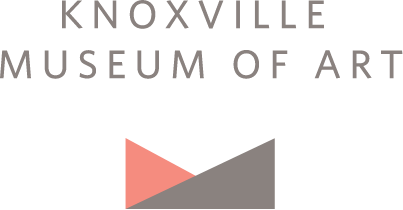VISIT | EXHIBITION

Knoxville Seven
Knoxville Seven
Exhibition NOTES
Knoxville Seven
The Knoxville 7
This exhibition is the first ever devoted to the history and legacy of a group of groundbreaking Knoxville artists who worked and exhibited together from the mid 1950s until 1965. C. Kermit “Buck” Ewing, who came to Knoxville as the first head of the University of Tennessee art department, recruited a group of progressive artists—initially Carl Sublett, Walter Stevens, and Robert Birdwell—to exhibit together in Knoxville and throughout the Southeast. Brash and ambitious, they explored the new visual language of Abstract Expressionism and produced what are likely the first abstract art works in East Tennessee. Sometimes they exhibited as a foursome and later as “The Knoxville 7” with fellow painters Joanna Higgs Ross and Richard Clarke, and sculptor Philip Nichols. They were influential as artists and teachers, establishing a foothold for avant garde ideas in East Tennessee and elevating the area’s visual arts profile. This exhibition calls attention to the important artistic contributions they made collectively and individually. This is the most comprehensive presentation of their work to date, and represents an important step the KMA’s mission to preserve and celebrate East Tennessee’s art history.
The Knoxville 7 remained a loose association whose artists maintained distinctly separate creative paths. Certain members worked closely with one another, while others rarely communicated except on matters related to the group’s exhibitions. Robert Birdwell and Buck Ewing were bonded by their common interest in painting the human figure and city views. However, Birdwell strongly favored Knoxville subjects while Ewing often depicted views of faraway places and exotic subjects encountered on his frequent overseas travels. Walter Stevens and Carl Sublett shared a passion for landscape painting out of doors, whether in local marble quarries or coastal Maine where they summered with their families. While Sublett shifted effortlessly between gestural landscape abstractions and realist figure paintings, Stevens consistently produced abstract vistas in which land and sea appear by stirred by turbulent natural forces. Watercolor specialist Richard Clarke often joined Stevens and Sublett on painting sessions in Knoxville and Maine, as did Ewing on occasion. In her atmospheric canvases, Joanna Higgs Ross applied networks of bold cross-hatched strokes to transform local landscapes into dynamic studies of sky and foliage, or shadowy backdrops for introspective self portraits. Philip Nichols, the Knoxville 7’s sole sculptor, brought extensive industrial welding skills to the production of intricate steel forms that, in their abstract geometric volumes, served as fitting sculptural counterparts to the largely abstract canvases produced by other members of the group.
As for their collective contributions, the Knoxville 7 artists invigorated Knoxville’s art scene with a regular slate of art exhibitions, benefit art auctions, and lively opening events. They promoted the notion that meaningful art could happen in Knoxville as much as anywhere. They also brought visibility to city’s art scene by circulating exhibitions of their work to important venues around the Southeast, and connected Knoxville to the larger art world by introducing international contemporary art concepts in campus classrooms and in the paintings and sculptures they exhibited locally.
By the mid 1960s, in light of rapid growth in the University of Tennessee’s faculty and student body, Ewing suspended the group’s activities and left them to pursue their own individual endeavors. Each continued working, teaching, and exhibiting, and occasionally collaborated with one or more members of the group on exhibitions held at various local and regional venues. By 1965, although their collective identity ended, the group had firmly established Knoxville as an important spot for contemporary art in the Southeast.
Little documentation of The Knoxville 7 exists outside of a handful of news articles and publications, recollections of local audience members who attended the group’s events, and works of art scattered throughout various private and public collections. This exhibition is a vital step toward raising awareness of Knoxville 7 artists’ historical significance, locating additional works of art, and uncovering new information about the artists and their activities. Toward that goal, the KMA seeks works of art, letters, photographs, articles, eyewitness accounts, and other information capable of supporting future projects aimed a defining the legacy of the Knoxville 7 in greater depth.
